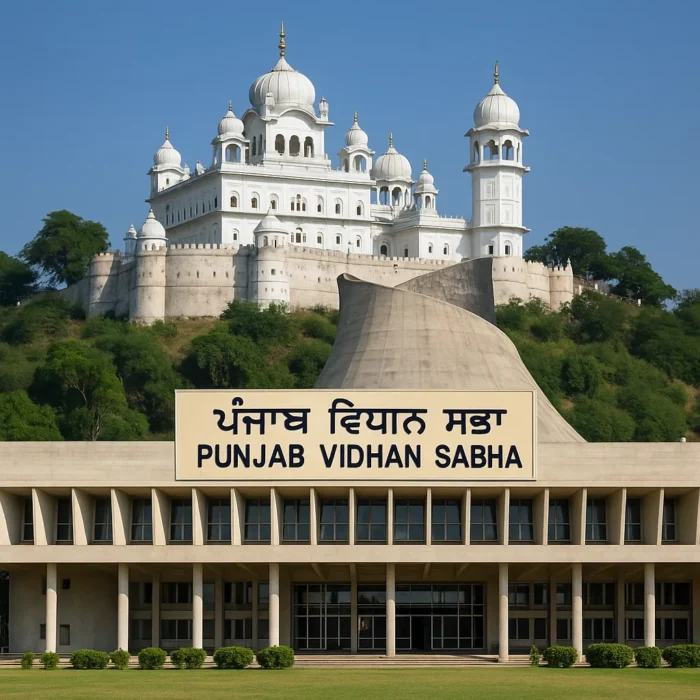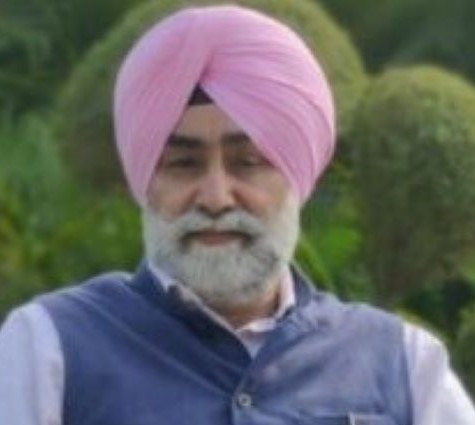 For the first time in Punjab’s history, the Vidhan Sabha will step out of Chandigarh and sit at Sri Anandpur Sahib on November 24, 2025. The AAP government under Chief Minister Bhagwant Mann has confirmed the session as part of a week-long commemoration of Guru Tegh Bahadur Ji’s 350th martyrdom anniversary.
For the first time in Punjab’s history, the Vidhan Sabha will step out of Chandigarh and sit at Sri Anandpur Sahib on November 24, 2025. The AAP government under Chief Minister Bhagwant Mann has confirmed the session as part of a week-long commemoration of Guru Tegh Bahadur Ji’s 350th martyrdom anniversary.
The scale of preparations is massive: nagar kirtans from Srinagar, Majha, Doaba, and Malwa converging at Anandpur Sahib; seminars, interfaith conferences, sports tournaments, kirtans, blood and organ donation drives; a tent city for pilgrims; decorative lighting, e-rickshaws, and even a heritage street. The government expects more than ten million devotees, including NRIs, and will stage light-and-sound shows at Virasat-e-Khalsa to promote the Guru’s message globally. It is being positioned as a “national-level event,” blending devotion with development.
It is a respect and honouring Guru Tegh Bahadur Ji’s supreme sacrifice for religious freedom. Three years back Prime Minister Narendra Modi addressed the nation from the Red Fort today to mark the 400th birth anniversary of Guru Teg Bahadur. PM Modi is the first prime minister to deliver a speech at the Mughal-era monument after sunset. The fort was chosen as the venue for the event as it was from here that Mughal ruler Aurangzeb had given orders for the execution of Guru Teg Bahadur (“Tegh Bahadur Hind Di Chadar”), the ninth Sikh Guru, in 1675. This brought the supreme sacrifice of the Sikh Guru for humanity and fight against tyranny to the National Podium.
But Anandpur Sahib is not just sacred geography; it is also political memory. It was here that the Shiromani Akali Dal framed the Anandpur Sahib Resolution in 1973, later adopted at Ludhiana in 1978, a charter demanding federal autonomy, economic justice, and cultural dignity for Punjab.
That charter still hangs over Punjab like an unfinished chapter. The big question is simple: will the AAP government dare to bring the Anandpur Sahib Resolution into the backdrop of this Vidhan Sabha session—or will it settle for garlands, speeches, and photo-ops?
The 1978 Resolution was not separatist, as its critics claimed, but federalist. It sought a real federal India where the Centre retained only defence, foreign affairs, currency, and communications.
It demanded Chandigarh’s transfer to Punjab, merger of Punjabi-speaking areas from Haryana, Himachal, and Rajasthan, and Punjab’s control over its waters and headworks. It rejected Indira Gandhi’s Emergency-era Ravi-Beas award as unjust.
It called for fair crop prices, removal of excise on tractors, jobs for youth, pensions for the elderly, and free plots for Dalits.

Is former Member of Punjab Public Service Commission
A farmer and keen observer of current affairs
It demanded Punjabi’s protection in neighbouring states and clarity on Sikh identity, including correcting Section 25 of the Constitution, which still ambiguously clubs Sikhs with Hindus.
It even called for a ban on liquor and drugs, recognising how social rot can hollow out a community.
Half a century later, nearly every demand remains relevant. Chandigarh is still a Union Territory. The SYL canal dispute continues to threaten Punjab’s lifeline. Punjabi is declining in Delhi, Haryana, and even in Punjab’s schools. Farmers are still trapped in monoculture and debt, while youth migrate abroad or sink into drugs. The ambiguity of Section 25 still undermines Sikh distinctiveness. The Anandpur Sahib Resolution reads less like history and more like today’s news.
Yet, after 1978, the Akali Dal, which authored the Resolution, ruled Punjab for more than two decades and did not act on it. Parkash Singh Badal once burnt a copy of the Constitution in protest against Section 25, but when he became Chief Minister for three terms, he quietly shelved the issue. The Resolutions were reduced to slogans in opposition and silence in power.
This is where the AAP government faces its test. By moving the Assembly to Anandpur Sahib, is it staging only a grand cultural spectacle—or is it also making a calculated move to reopen the questions of Chandigarh, state’s economic rights, water rights, Punjabi language, and Sikh identity? If it does the former, it will add colour to the commemoration but little else. If it does the latter, it could mark a genuine political turning point.
Already, politics shadows the commemorations. The Shiromani Gurdwara Parbandhak Committee, aligned with the Akali Dal, has accused AAP of trying to sideline Sikh institutions by running parallel events. The SGPC is holding its own ceremonies, setting up a battle of optics before the 2027 polls. In Delhi, AAP MP Malvinder Singh Kang demanded renaming New Delhi railway station after Guru Tegh Bahadur Ji, invoking the Guru’s journey from Anandpur Sahib to Delhi. Such moves show how symbolism and politics are already colliding.
The Vidhan Sabha session offers AAP a chance to rise above spectacle. If it wants to honour Guru Tegh Bahadur Ji’s sacrifice meaningfully, it must act on the spirit of Anandpur Sahib.
That means passing firm resolutions: Chandigarh must be handed to Punjab; Punjab’s waters must not be diverted through SYL; assert for economic rights of Punjab; and Sikh identity must be respected in the Constitution and ambiguity removed. These are not extreme demands—they are unfinished business.
The Akalis authored the Anandpur Sahib Resolution and abandoned it. The Congress side-stepped it. Now AAP holds the stage at Anandpur Sahib. The choice is stark: will this session remain a glittering show of symbolism, or will it revive the Anandpur Sahib Resolution? Will it demand what is over due to Punjab?